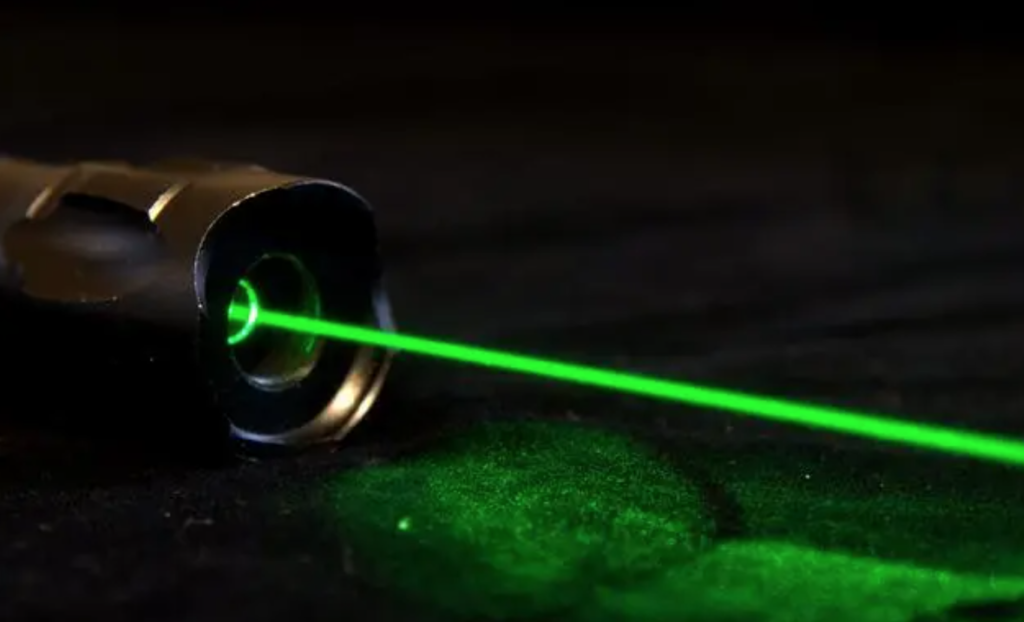The laser consists of three main parts
1. The energy source (often called the pump or pump source)
2. The gain medium or laser medium
3. Two or more mirrors to form an optical resonant cavity

Pump Sources
The pump source is the part of the laser system that provides the energy for the laser. Examples of pump sources include electrical discharges, flash lamps, arc lamps, light from other lasers, chemical reactions, and even explosive devices. The type of pump source used depends largely on the gain medium, which also determines how the energy is transferred to the medium.
HeNe lasers use a discharge from a helium-neon gas mixture, Nd: YAG lasers use light focused from a xenon flashlamp or diode laser, and excimer lasers use a chemical reaction.
Gain Medium/Laser Medium
The gain medium is the main determinant of the operating wavelength and other characteristics of the laser. Gain media in different materials have a linear spectrum or a broad spectrum. Gain media with a broad spectrum allow the laser frequency to be adjusted. There are hundreds of different gain media that enable laser operation (see the list of laser types for the most important list). Gain media are excited by a pump source to produce a particle number inversion, where spontaneous and excited emission of photons occurs in the gain media, leading to the phenomenon of optical gain or amplification.
Examples of different gain media include:
Liquids, such as dye lasers. These are typically organic chemical solvents, such as methanol, ethanol, or ethylene glycol, to which chemical dyes, such as coumarin, rhodamine, and fluorescein, are added. The exact chemical structure of the dye molecule determines the operating wavelength of the dye laser.
Gases, such as mixtures of carbon dioxide, argon, krypton, and helium-neon. These lasers are usually pumped by a discharge.
Solids, such as crystals and glass. Solid-body materials are usually doped with impurities such as chromium, neodymium, erbium, or titanium ions. Typical hosts include YAG (Yttrium Aluminum Garnet), YLF (Yttrium Lithium Fluoride), Sapphire (Aluminum Oxide), and various types of glass. Examples of solid-state laser media include Nd: YAG, Ti: sapphire, Cr: sapphire (often referred to as ruby), Cr: LiSAF (chromium-doped lithium strontium aluminum fluoride), Er: YLF, Nd: glass, and Er: glass. Solid-state lasers are usually pumped by flash lamps or light from other lasers.
A semiconductor is a solid with a uniform dopant distribution, a crystal, or a material with varying dopant levels in which the movement of electrons can cause lasing. Semiconductor lasers are usually very small and can be pumped with a simple current, allowing them to be used in consumer devices such as compact disk players. See laser diode.
Optical resonator
Optical resonators or optical cavities in their simplest form are two parallel mirrors placed around a gain medium that provide feedback of light. The mirrors are given an optical coating which determines their reflective properties. Typically, one is a high reflector, and the other a partial reflector. The latter is called an output coupler because it allows a portion of the light to leave the cavity to produce the output beam of the laser.
Light from the medium produced by spontaneous radiation is reflected back to the medium by mirrors where it can be amplified by stimulated emission. The light may be reflected from the mirrors and therefore pass through the gain medium hundreds of times before leaving the cavity. In more complex lasers, configurations with four or more mirrors forming the cavity are used. The design and alignment of the mirrors relative to the medium is critical in determining the exact operating wavelength and other properties of the laser system.
Other optical devices, such as rotating mirrors, modulators, filters, and absorbers, can be placed within the optical resonant cavity to have various effects on the laser output, such as changing the operating wavelength or generating laser pulses.
Instead of using an optical cavity, some lasers rely on very high optical gain to produce significantly amplified spontaneous emission (ASE) without the need to feed light back into the gain medium. Such lasers are said to be superluminous and emit low-coherence but high-bandwidth light. Since they do not use optical feedback, these devices are usually not lasers.
